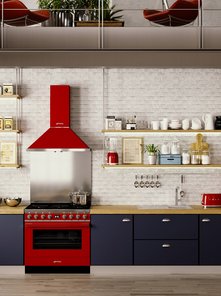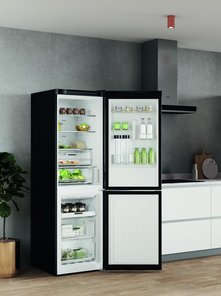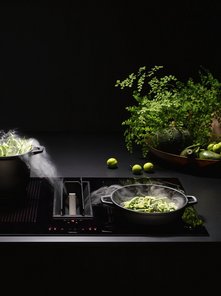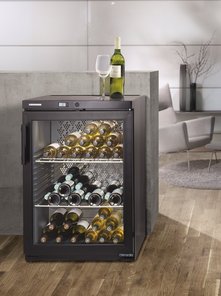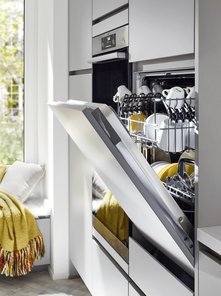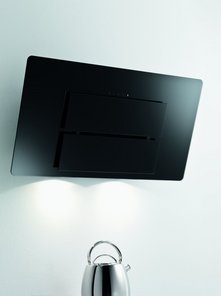Traditional oven
Also associated with the term natural convection or static heat, this type of oven is heated by elements located at the top and bottom. This gives you the choice between two vertical cooking modes depending on what you want to cook. The grill function allows you to brown or grill gratins or meat. The simplicity of its functions makes a built-in oven the cheapest option.
Advantages and disadvantages
+ Easy to use and clean.
– Energy consumption and slow preheating.
Fan-assisted oven
Two cooking types exist in this category of built-in oven:
Fan-assisted
A fan at the back of the oven circulates the air for faster cooking and better heat distribution.
Convection
UAn additional element, combined with ventilation, distributes perfectly consistent heat.
Advantages and disadvantages
+ Consistent cooking of your dishes, no mixing of odours, rapid preheating.
– Higher price than a traditional oven and quite noisy.
Multifunction oven
This allows you to switch between convection heat and natural convection. This multifunction system avoids mixing of odours and tastes. This means you can happily cook a roast alongside a delicious apple pie.
Advantages and disadvantages
+ Take advantage of two cooking modes.
– Slightly noisy fan.
Steam oven
A steam oven, or a combined steam and multifunction oven, provides low-temperature cooking, at between 40°C and 120°C. Some even offer high-pressure cooking, similar to a traditional pressure cooker! This preserves your dishes’ vitamins, nutrients and flavours.
Advantages and disadvantages
+ Eat healthier, with foods that are always moist and fat-free.
– Slow cooking is not suitable for all dishes.
Ideas & tips
Voir tous nos contenus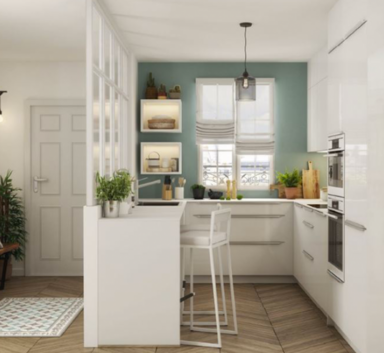
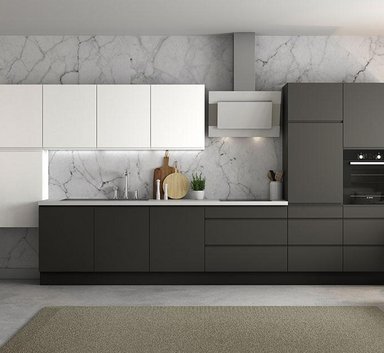
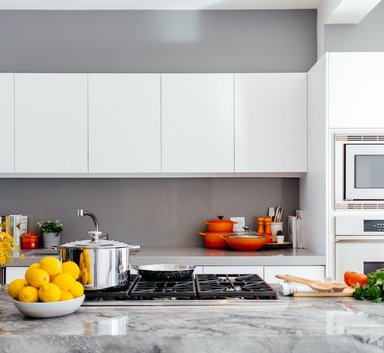
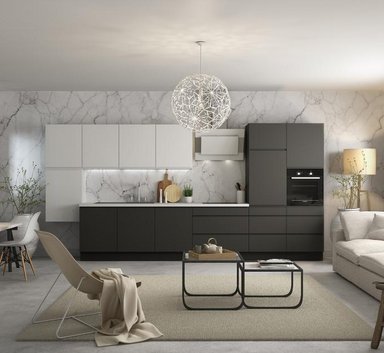
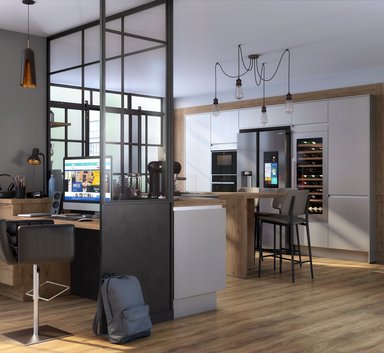
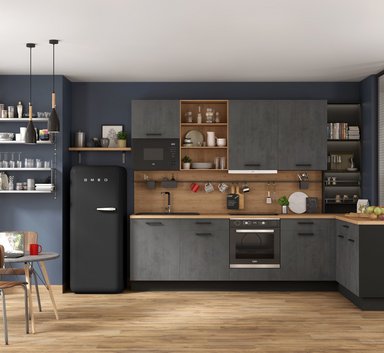
A kitchen in dark grey and light wood: a contemporary and sophisticated look
Reach the articleOur others equipments










